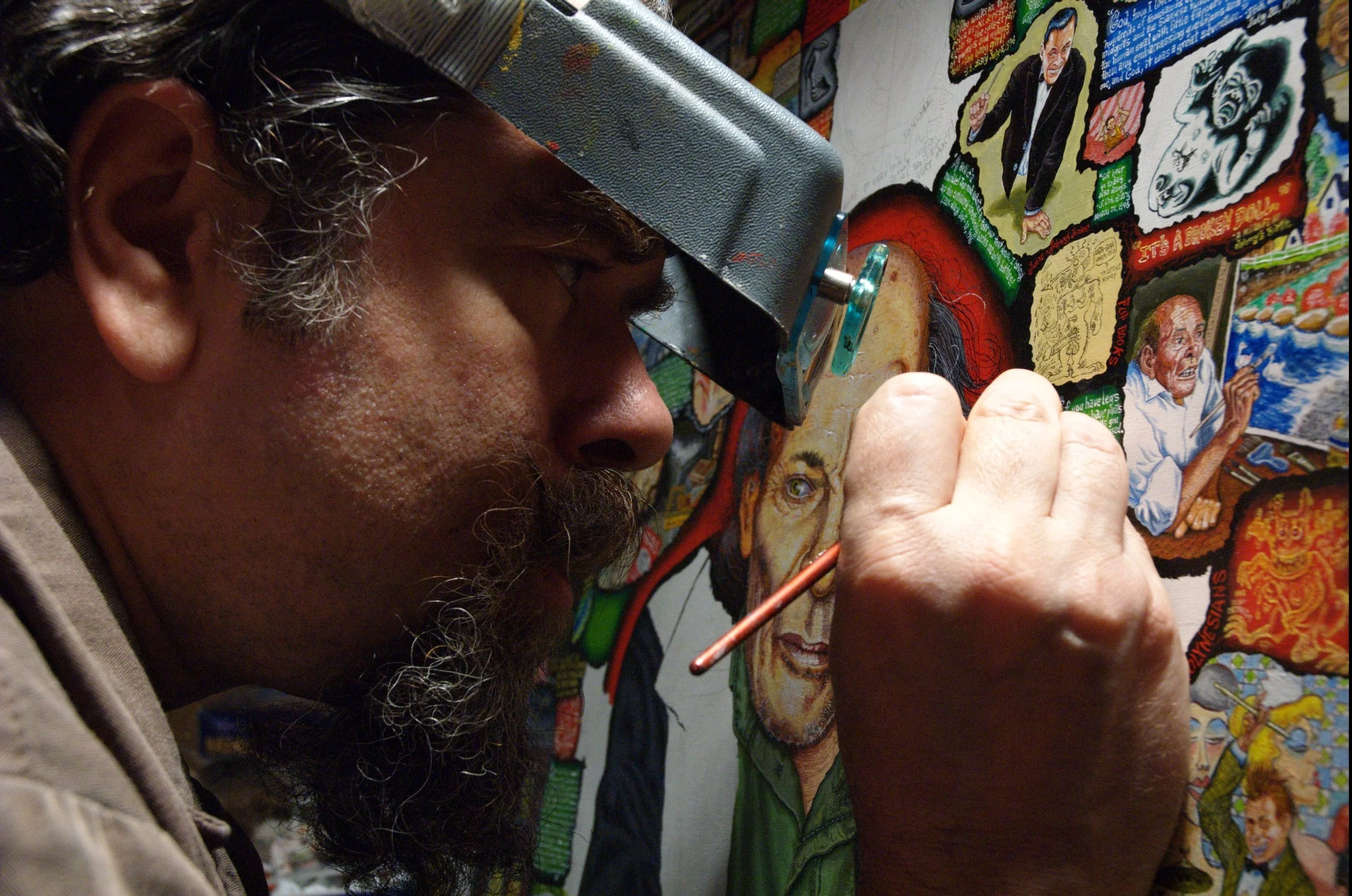JOE COLEMAN
Tilton Gallery, New York : September 7–October 4, 2006
Organized by the Cartin Collection, this exhibition features Joe Coleman’s densely detailed paintings of cultural icons, antiheroes, and fringe historical figures. He is fascinated by the eccentricities of each individual being. His subjects have ranged from the country and western singer Hank Williams, to the 16th century composer and murderer Duke Carlo Gesualdo, to the fabled motorcyclist Indian Larry, a close friend of the artist's. The artist also has depicted himself in a number of works. Rather than simply making portraits, Coleman explores the life and legendary status of his subjects through a compacted matrix of images and text. A central figure is usually accompanied by vignettes of the subject’s life, interwoven with hand-lettered passages describing those events. Coleman paints his often violent or demented subjects with exacting care, influenced by Early Renaissance painting. His work also reflects the vivid colors and lurid character of 1950's crime comics, and the obsessive concentration of self-taught artists.
In his catalogue essay, exhibition curator Steven Holmes, writes that, “Coleman’s work references ecclesiastical forms, such as the illuminated manuscript.” Holmes notes in Coleman’s paintings the influence of his early visual experiences at St. Mary’s Catholic Church, growing up in Norwalk, CT. Images of saints have been replaced by contemporary figures of holy madness. As in medieval altarpieces, Coleman’s highly structured compositions explicate complex narratives. Holmes sees his work in the tradition of painters such as Bosch, Breughel, Grunewald, and Goya whose work unflinchingly saw folly, trauma, and suffering as inherent aspects of the human condition. The artist focuses intently on loss, both personal and societal, but always with raw humor and a nearly hallucinatory pictorial intensity.
For almost thirty years, Joe Coleman has been an influential presence in New York as a painter, creator of provocative performances, musician, and actor. He is regarded as a cult figure in the world of underground comic book art. Coleman maintains the Odditorium, his museum-like installation of strange and disturbing objects, including taxidermy and vintage murder weapons. His painting, The Glory That Was Once New York, heavily influenced the set design and art direction of Martin Scorcese’s movie, The Gangs of New York. The painting, owned by film director Jim Jarmusch, will be in the exhibition.
Joe Coleman has shown his work extensively since the mid-1980s, beginning with exhibitions in the East Village at galleries like Limbo, Civilian Warfare, and Chronoside. His paintings have been part of the exhibitions The End is Near!at the American Visionary Museum, Baltimore, Cult Raptureat The Center on Contemporary Art, Seattle, and Brooklyn/718 at the Palm Beach Museum of Contemporary Art. Nationally, Coleman’s solo exhibitions have included shows at James Corcoran Gallery, Los Angeles and Joe Coleman: Matrix 139 at the Wadsworth Anthenaeum, Hartford, CT. Coleman's work was also included in Hieronymus Bosch 1450-1516 at Museum Boijmans Van Beuningen in Rotterdam, an expansive exhibition of Bosch's work that included the work of a small group of contemporary artists inspired by Bosch.
